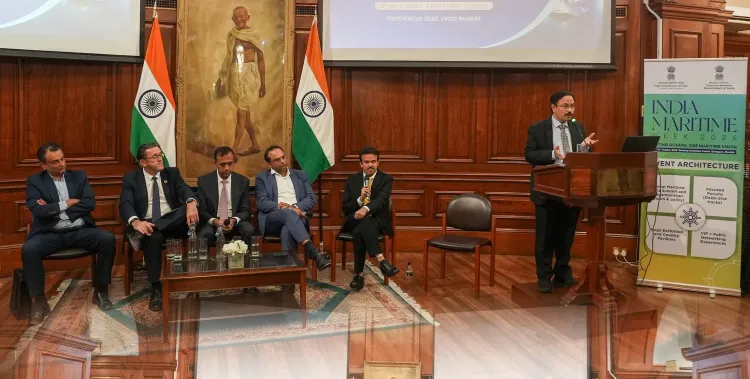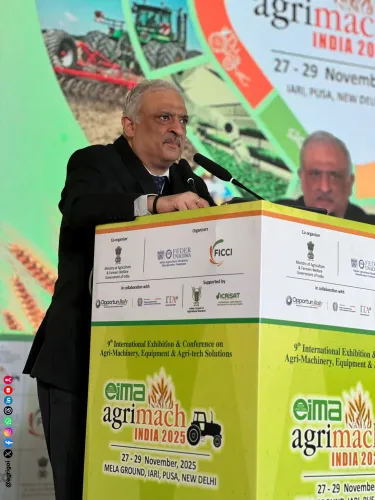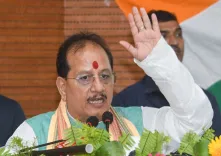Is India the Next Big Opportunity for Global Maritime Investors?

Synopsis
Key Takeaways
- 100% FDI allowed in shipping and shipbuilding.
- Attractive fiscal incentives for investors.
- Significant expansion of port capacity planned by 2047.
- Focus on sustainability and green energy in maritime operations.
- Upcoming India Maritime Week 2025 for global networking.
New Delhi, July 9 (NationPress) With 100 percent FDI allowed under the automatic route in both shipping and shipbuilding, alongside fiscal incentives from the International Financial Services Centre (IFSC) at GIFT City, India is emerging as an attractive destination for global maritime investors, according to a senior government official.
Key advantages include a 10-year tax holiday, zero GST on ship imports, and the absence of withholding tax on maritime transactions.
During the ‘India Maritime Investment Meet’ at India House in London, TK Ramachandran, Secretary of the Ministry of Ports, Shipping and Waterways, elaborated on India’s strategic maritime priorities, emphasizing the country’s ambition to become a global maritime leader.
“Under the visionary leadership of Prime Minister Narendra Modi, India is entering a new phase of maritime growth — focused on sustainability, digital transformation, and global collaborations,” he noted.
Highlighting robust macroeconomic fundamentals, Ramachandran indicated that India has become the fourth-largest economy, surpassing $4 trillion, and is experiencing significant foreign investment growth.
The Secretary detailed efforts to modernize India’s port ecosystem via Public-Private Partnerships, targeting an increase in current cargo handling capacity from 2,760 MTPA to 3,500 MTPA by 2030 and 10,000 MTPA by 2047.
He emphasized that India’s ports serve not only as trade gateways but also as catalysts for clean energy transitions, promoting offshore wind, green hydrogen, and low-carbon logistics.
Reaffirming India's dedication to sustainability, Ramachandran stated that green shipping, shipbuilding, and recycling are foundational elements of the national maritime strategy. The establishment of three Green Hydrogen Hub Ports at Deendayal, Chidambarnar, and Paradip, along with the launch of the Green Tug Transition Programme, were highlighted as vital components of India’s decarbonization agenda.
On the digital front, the Secretary shared India’s goal to emerge as a technologically advanced maritime nation. He discussed initiatives like the Maritime Single Window, One Nation-One Port Process (ONOP), and MAITRI (Virtual Trade Corridor for IMEEC countries), designed to enhance logistics and minimize transaction costs through comprehensive digital integration.
The Secretary also warmly invited stakeholders to join the forthcoming ‘India Maritime Week 2025’, set to take place in Mumbai from October 27-31, providing a premier international venue for networking, innovation, and investment opportunities.
Global participants showed significant interest in India’s liberalized ship flagging regime, the tonnage tax framework, and blended financing models under the Maritime Development Fund, all viewed as progressive measures to minimize risks and attract private investment.
The meeting was inaugurated by Vikram K. Doraiswami, High Commissioner of India to the UK, who underscored the historic maritime partnership between India and the UK, reaffirming their mutual commitment to developing sustainable, resilient blue economy corridors.
In his remarks, Doraiswami stressed the significance of leveraging maritime infrastructure to bolster global trade, facilitate clean energy transitions, and promote inclusive economic growth.









